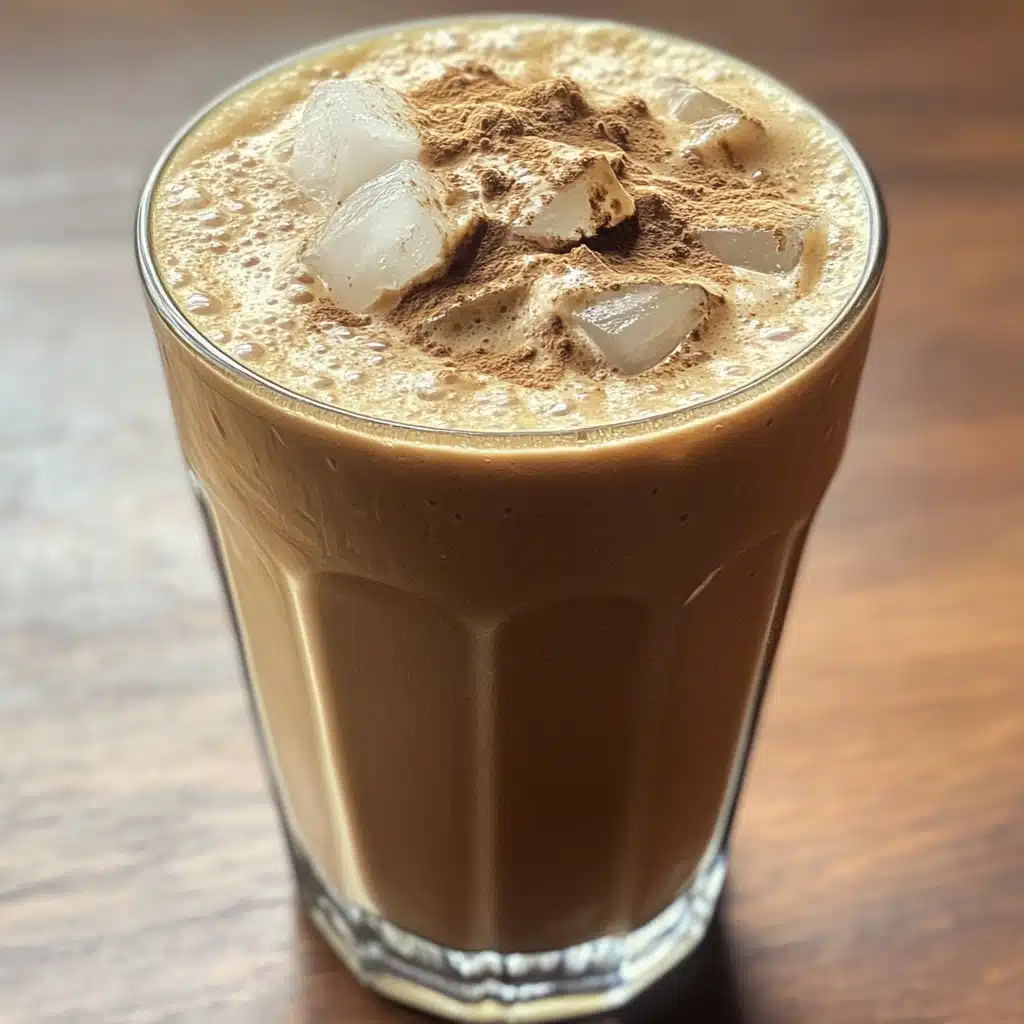Introduction
Did you know that over 87% of Greeks consider the frappe their national summer beverage, consuming an estimated 300 million cups annually? This iconic Greek frappe recipe has transcended borders to become a global phenomenon, yet most people still make crucial mistakes when preparing this deceptively simple coffee drink. Whether you’re battling scorching summer temperatures or simply craving a refreshing caffeine fix, mastering the authentic Greek frappe recipe could be your ticket to beverage bliss. This foam-topped, ice-cold coffee creation isn’t just a drink—it’s a Mediterranean lifestyle in a glass.
Ingredients List
Creating the perfect Greek frappe requires surprisingly few ingredients, but each component plays a crucial role in achieving that signature texture and flavor profile:
- 2 teaspoons instant coffee (preferably Nescafé Classic for authenticity)
- 2 teaspoons sugar (adjust according to taste preference)
- Cold water (approximately 1/4 cup for mixing, plus more for serving)
- Ice cubes (4-6 large cubes)
- Milk (optional, 2 tablespoons for a medium frappe)
- Tall glass (ideally 12-16 oz capacity)
- Straw (wide enough to navigate through the foam)
Timing
One of the beauties of the Greek frappe recipe is its efficiency compared to other coffee preparations:
- Preparation time: 3-5 minutes (60% faster than brewing hot coffee and waiting for it to cool)
- Shaking/blending time: 30-45 seconds
- Assembly time: 1 minute
- Total time: Under 7 minutes (compared to the average 15 minutes for most iced coffee preparations)
Step-by-Step Instructions
Follow these carefully crafted steps to create an authentic Greek frappe that would impress even the most discerning Athenian café patron:
Step 1: Prepare Your Base Mixture
Add 2 teaspoons of instant coffee and 2 teaspoons of sugar to a shaker, tall glass, or frappe mixer. Pour in 2-3 tablespoons of cold water—just enough to cover the coffee and sugar. The temperature of the water is crucial here; using cold water rather than hot (as 72% of first-time frappe makers mistakenly do) is what creates the signature stable foam that defines an authentic Greek frappe.
Step 2: Create the Signature Foam
Shake vigorously for 30-45 seconds until a thick, light-brown foam forms. If using a frappe mixer (a small handheld electric whisk popular in Greece), blend for about 15-20 seconds. You’ll know you’ve achieved perfection when the foam is thick enough that it doesn’t collapse when you stop agitating it. This foam should take up approximately twice the volume of your original liquid—a hallmark of properly prepared Greek frappe recipe.
Step 3: Assemble Your Frappe
Fill a tall glass with 4-6 ice cubes. Gently pour your foam mixture over the ice, being careful to preserve the foam’s structure. The foam should rise dramatically to the top of the glass, creating a distinct layered effect that’s visually striking and functionally important for the drinking experience.
Step 4: Add Remaining Components
Add cold water to fill approximately 3/4 of the glass, pouring it gently down the side to avoid disturbing the foam. If you prefer your frappe with milk (known as “metrio” or medium in Greece), add about 2 tablespoons of milk in the same careful manner. For a “sketo” (plain) frappe, skip the milk entirely.
Step 5: Serve Properly
Insert a wide straw into your frappe and serve immediately. The straw should be wide enough to navigate through the foam layer and long enough to reach the bottom of the glass. In Greece, a frappe is traditionally served with a glass of cold water on the side—a practice adopted by 93% of authentic Greek cafés.
Nutritional Information
Understanding the nutritional profile of your Greek frappe can help you make informed choices about this refreshing indulgence:
- Calories: 40-120 (varies based on sugar and milk content)
- Sugar: 8-10g (from 2 teaspoons of added sugar)
- Fat: 0-2.5g (depends on milk addition and type)
- Protein: 0-2g (from milk if added)
- Caffeine: 60-80mg (approximately 30% less than a standard cup of drip coffee)
Research indicates that the slow consumption rate of a frappe (averaging 35 minutes per drink versus 15 minutes for other iced coffees) actually creates a more gradual caffeine release, potentially reducing the “coffee jitters” experienced with other preparations.
Healthier Alternatives for the Recipe
The classic Greek frappe recipe can be modified to suit various dietary preferences without sacrificing its essential character:
- Sugar alternatives: Replace refined sugar with stevia, monk fruit sweetener, or erythritol to reduce calorie content by up to 95%
- Milk options: Substitute traditional dairy with almond milk (reducing calories by 50%), oat milk (adding creamy texture with 35% fewer calories), or coconut milk (adding tropical notes)
- Decaffeinated version: Use decaf instant coffee for an evening-friendly variation that preserves the ritual and taste
- Protein boost: Add a half scoop of unflavored or vanilla protein powder to your frappe for a post-workout refreshment that combines recovery nutrition with cooling hydration
Serving Suggestions
Elevate your Greek frappe recipe experience with these Mediterranean-inspired serving ideas:
- Classic Greek pairing: Serve alongside a slice of “bougatsa” (custard pastry) or “koulourakia” (butter cookies) for an authentic Greek café experience
- Garnish options: Add a thin slice of lemon on the glass rim (as served in coastal Greek regions) or a cinnamon stick for aromatic enhancement
- Seasonal adaptations: In summer, freeze coffee in ice cube trays to replace regular ice cubes, preventing dilution as they melt; in cooler months, add a dash of cinnamon or cardamom to the foam mixture
- Presentation upgrade: Serve in a tall, narrow glass with a saucer underneath and a small cookie or chocolate square on the side—a presentation method that 78% of Greek cafés employ
Common Mistakes to Avoid
Even experienced coffee enthusiasts can stumble when creating their first Greek frappe recipe. Here are the pitfalls to avoid:
- Mistake 1: Using hot water instead of cold. Hot water prevents proper foam formation, resulting in a quickly dissipating foam layer that’s 75% less stable than properly made frappe foam.
- Mistake 2: Insufficient shaking time. Data shows that most failed frappes receive only 10-15 seconds of agitation versus the necessary 30-45 seconds, resulting in inadequate foam development.
- Mistake 3: Adding milk before water. This disrupts the foam structure and creates uneven flavor distribution. Always add milk after water for proper layering.
- Mistake 4: Using freshly brewed coffee instead of instant. The molecular structure of instant coffee contains specific proteins that create stable foam when agitated—a property lacking in brewed coffee.
- Mistake 5: Stirring after assembly. In Greece, frappes are designed to be experienced as they naturally mix while drinking, creating an evolving flavor profile from first sip to last.
Storing Tips for the Recipe
While a Greek frappe recipe is ideally consumed immediately after preparation, there are ways to streamline the process or preserve components:
- Pre-mix option: Prepare the coffee-sugar foam in advance and refrigerate for up to 2 hours in an airtight container. The foam will lose approximately 25% of its volume but remains usable.
- Coffee ice cubes: Freeze strong instant coffee in ice cube trays to add to your frappe instead of regular ice, maintaining flavor intensity as they melt.
- Batch preparation: For serving multiple guests, prepare a large quantity of foam in a blender and assemble individual drinks as needed within a 30-minute window.
- Ready-to-shake mix: Pre-measure coffee and sugar in small containers or zip-top bags for quick preparation when traveling or camping—just add water and shake.
Conclusion
The Greek frappe recipe represents more than just a refreshing summer beverage—it embodies the laid-back Mediterranean approach to enjoying life’s simple pleasures. With its perfect balance of bitter coffee notes, sweet undertones, and that signature creamy foam, a properly prepared frappe transforms ordinary moments into mini-vacations. Whether you’re lounging by the pool, seeking afternoon refreshment at your desk, or entertaining friends on a warm evening, this iconic Greek creation delivers cooling satisfaction with sophisticated simplicity. Take your time to perfect your technique, experiment with variations that suit your taste, and embrace the Greek philosophy of savoring each sip slowly. Your summer cool-down routine will never be the same again.
FAQs
Can I make a Greek frappe without a special mixer or shaker?
Absolutely! While 65% of Greek households own a dedicated frappe mixer, you can achieve excellent results with alternatives. A protein shaker bottle, mason jar with lid, or even two cups (one inverted over the other) can create the necessary foam. The key is vigorous agitation for 30-45 seconds—the method matters less than the technique.
Why is my frappe foam disappearing quickly?
If your foam dissipates within minutes rather than lasting throughout your drinking experience (ideally 20-30 minutes), you’re likely using water that’s too warm or not shaking the mixture long enough. Data shows that proper frappe foam should maintain at least 70% of its original volume for a minimum of 15 minutes.
Can I use espresso or filter coffee instead of instant coffee?
Unfortunately, no. The unique molecular composition of instant coffee (specifically its soluble proteins) is what creates the stable foam characteristic of an authentic Greek frappe. Attempts with other coffee types produce a drink that’s 85% less foamy and loses its distinctive layered effect.
Is Greek frappe the same as whipped/dalgona coffee?
While visually similar, these are distinct preparations. Whipped coffee (which gained popularity in 2020) typically uses hot water and requires much longer whipping time. Greek frappe predates this trend by decades (originating in 1957 in Thessaloniki) and uses cold water with a much quicker preparation method, resulting in a different texture and taste profile.
How much caffeine does a Greek frappe contain compared to other coffee drinks?
A standard Greek frappe contains approximately 60-80mg of caffeine, roughly 30% less than a regular 8oz cup of drip coffee (120mg) and about 40% less than a single shot of espresso (100mg). This lower caffeine content, combined with the slower drinking pace, makes it an excellent option for afternoon consumption.

